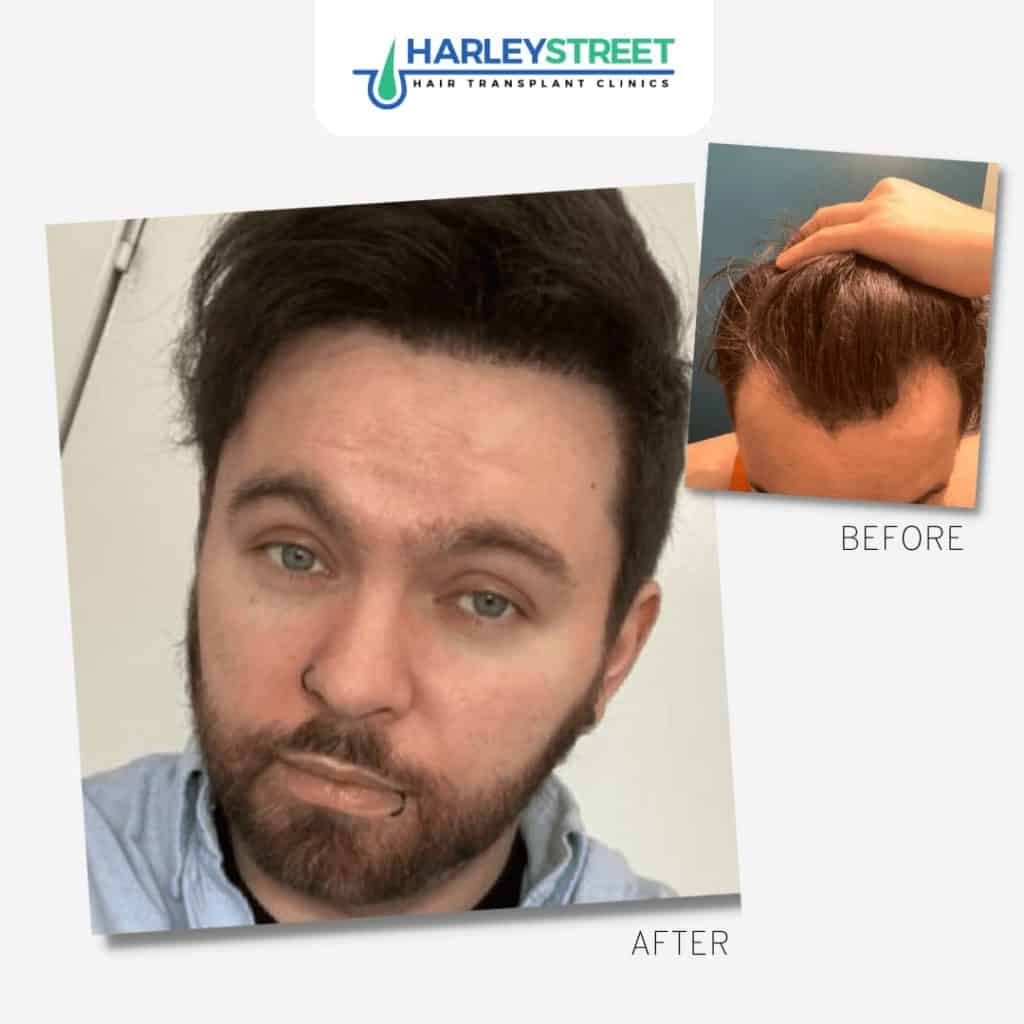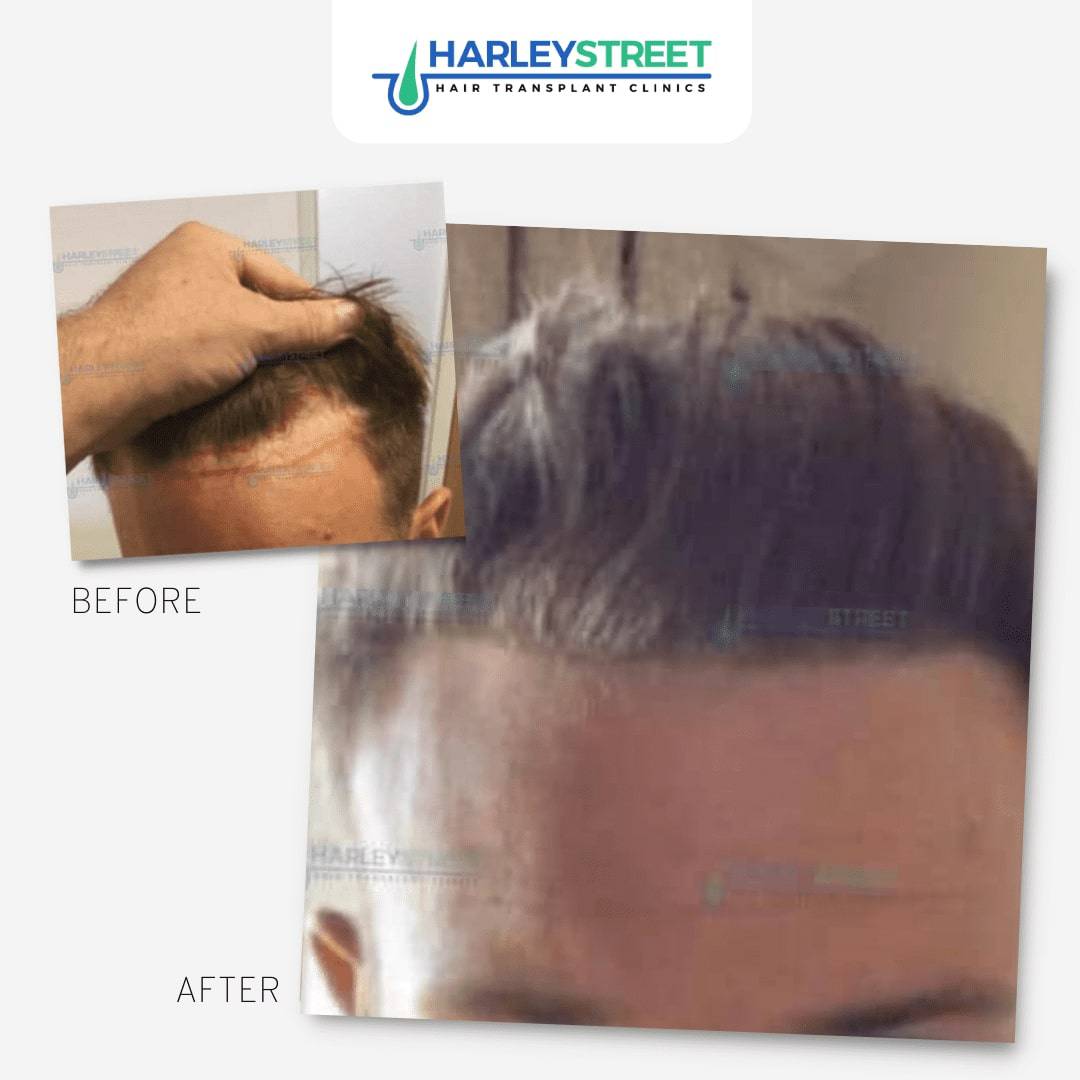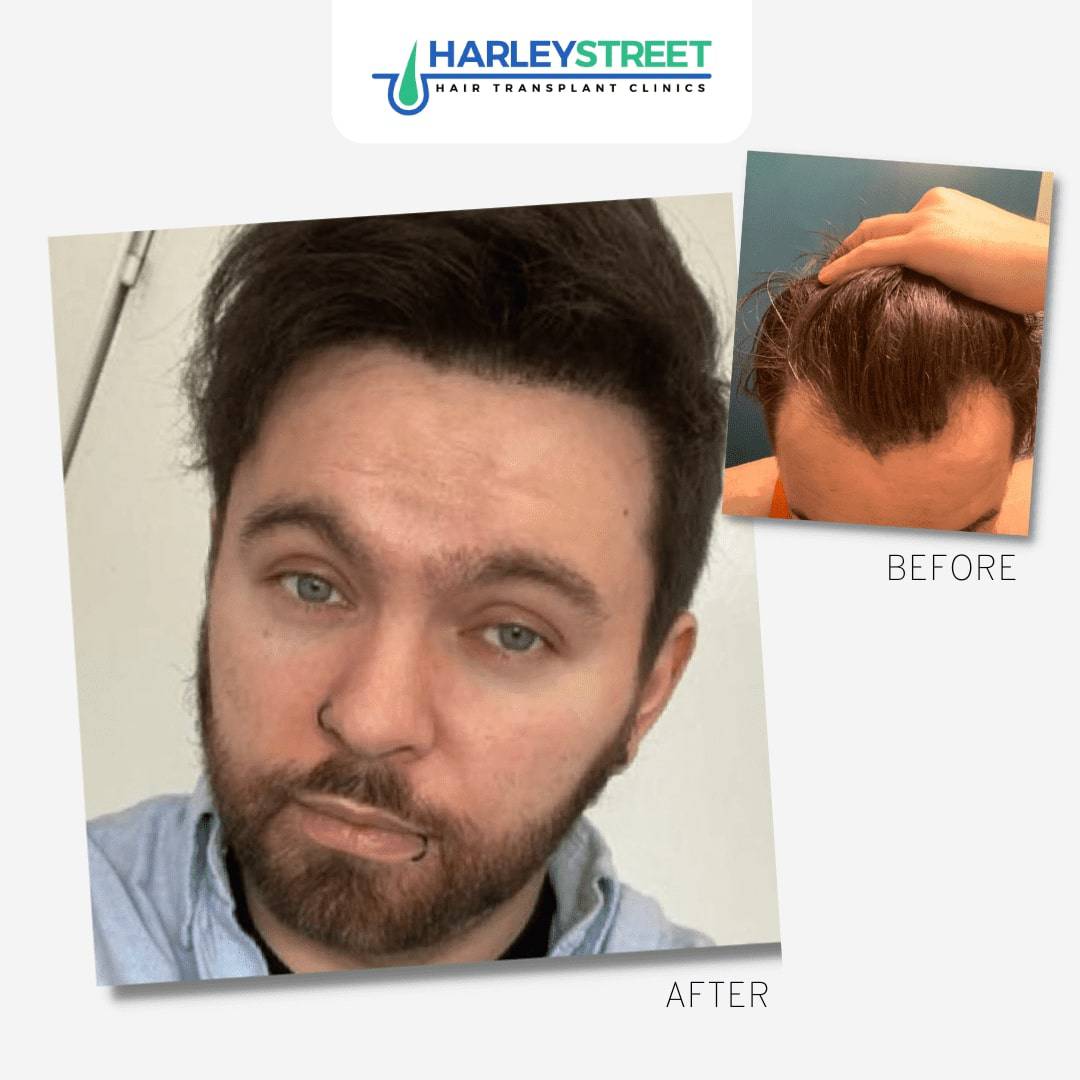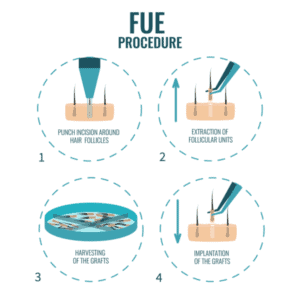Very Common Area for Men in the UK
Cost: £3,000 – £6,000
Typical Method Used: FUE
Hairline Hair Transplant

The hairline hair transplant is one of the most popular surgical options patients choose to fix their receding hairline. From a simple filling of the temple area to more drastic hairline lowering surgeries, this hair restoration surgery will leave you feeling self-confident and years younger!
What is the hairline?
Before a discussion of hair transplants can take place, it is important to understand the characteristics of hairline, and how hairline design can affect the surgical method you opt for.
A person’s hairline is the name given to the hair follicles on the top of their head that are visible from a front-facing view. The hairline is defined as the closest hairs to the forehead, measuring from ear to ear.
As the hairline is one of the first areas to be affected by male pattern baldness, the hairline hair transplant is, by far and away, the most popular transplantation method we have on offer.
The hairline is particularly prone to hair loss, whilst the crown area is more susceptible to hair thinning. If a patient comes to us suffering with hair loss on the temples, they often will need between 1,800 and 2,500 grafts during a hair transplant.
From as early as a Stage 2 or 3 on the Hamilton-Norwood Scale, a man’s hairline will slowly become “m-shaped”. This is caused by a recession of the hair follicles up both temples. This is more commonly known as a “receding hairline”.
With a receding hairline, many patients come to us needing a hairline surgery. This will help to restore the hairline and promote new hair growth in the temple areas.
What is a Hairline Hair Transplant?
Any hair transplant will look to take hair follicles from an area of high density and implant them into an area of low density. The high density area is called to a “donor area” and refers to the sides and back of your head. The low density area is often the crown, mid-parting or hairline, and is called the “recipient site”.
With a hairline hair transplant, your hairline is the “recipient site”. Hair grafts from your donor area will be implanted into your temples (and sometimes forehead), levelling out your previously m-shaped hairline.
The aim of this hair transplant surgery is to provide patients with a natural hairline that is flat-looking and does not show signs of recession. In turn, this will make a patient look years younger, improving their appearance and self-confidence.
Temple vs Lowering: Hairline Hair Transplant Surgery
There are two main types of surgery when it comes to the hairline hair transplant: the hairline lowering method, and and the temple restoration surgery
Both of these surgeries are doable using follicular unit extraction (FUE) or follicular unit transplantation (FUT). However, almost all hair transplants today are performed using FUE.
Temple Restoration Hair Transplant:
The first hairline surgery is usually given to younger patients (25-35) who are only suffering with the initial signs of male pattern hair loss. During this procedure, the hair transplant surgeon would look to fill in the temple area that has no hair.
This should provide the most natural result of the two hairline surgeries as no work is required to bring the hairline down any further.
Hairline Lowering Hair transplant:
As male pattern hair loss progresses, the hairline itself has been known to retreat backwards over time with the temples. In these cases, a more drastic hairline lowering method may be needed for patients.
The second hairline hair transplant method we offer is a lowering surgery. This method is slightly more complex and , usually, more expensive than the simpler temple restoration treatment.
During this procedure, your donor hair will be used to lower the distance between the hairline and eyebrows and make the forehead look smaller. In many cases, the distance between hairline and eyebrows are reduced to 7.5cm in the middle and and 8cm in the temple.
Patient Before and After Pictures: How Will a Hairline Hair Transplant Work?


This gentleman came to us with one of the simpler hairline jobs. As you can see above, our hair transplant surgeon was able to hide his early signs of a receding hairline, filling in this small, hairless area. Between 1,000 and 1,500 grafts were needed for this hair transplant.
As you can see in the picture above, this gentleman chose to have between 1,800 grafts implanted into his temple area. After suffering with hair loss in his temples for years, a hairline surgery enabled him to gain a natural hairline that made him look younger.
In the case of this gentleman, a more complex hairline surgery was needed. As this patient’s hairline was receding in an unusual “u-shape”, over 2000 grafts were needed to lower the hairline, lessening the gap between his prior hairline and eyebrows.
What Happens During a Hairline Hair Transplant: Follicular Unit Extraction (FUE)
During a hairline hair transplant, the method used in almost all cases is called Follicular Unit Extraction (FUE). FUE hair transplants look to extract donor hairs individually before they are re-implanted into the receding hairline.
This hair transplant surgery costs a graft survival rate of 90-95%, fending off future hair loss for almost a decade – in some cases maybe even longer. As with any hair transplant, it is always recommended to continue with another chemical treatment like finasteride post-surgery.
The Day of Procedure

After meeting your hair transplant surgeon and technicians on the day of your surgery, you will have your head shaved and then be given a local anaesthetic. Whilst you are given local anaesthetic, you will be fully conscious but unable to feel any pain on your scalp.
After anaesthetic, the first part of the procedure will be the extraction phase of your donor grafts. This will usually take between 2-3 hours and will be where your transplantable hair follicles are be extracted and prepped for re-implantation.
With most hairline surgeries, anywhere between 1800 to 2500 hair grafts are usually used during a hair transplant. Each hair follicle is assessed by one of our technicians to make sure they are suitable for re-implantation.
During the preimplantation phase, a series of small incisions are made by the surgeon to prep your recipient area for receiving grafts. On the hairline, incisions are usually made with a smaller implanting pen (usually between 0.7cm and 0.9mm).
From here, your donor hairs will be implanted into your hairline area. The aim is to implant them evenly across your new hairline so the result is full and thick looking. This will help ensure the best hairline possible.
How Long Will It Take For My Hairline to Look Normal?
Immediately after your surgery, the expected recovery time for a hairline surgery is between 10-14 days. During this recovery time, the tiny scabs caused by your surgery will be able to heal.
During this initial recovery period, you will not be able to go to the gym, wear a hat, or do anything to upset your transplanted hair follicles. Almost all of our patients work from home, or are prepared to take some time off work for this hair transplant procedure.
A few weeks after your hair transplant, your hair will begin to grow as normal. This is the initial growth phase of your new hair follicles. You shouldn’t experience hair loss during this time.
However, between 4 and 5 weeks after your hair transplant, don’t be alarmed if your hairline hair follicles begin to fall out, or shed. Hair loss is completely normal and is the first growth phase of your new hairline.
From 6 weeks onwards, you hairline hair should grow at a normal, consistent rate. Transplanted hair will usually take between 9-12 months to provide a final result. However, this is dependent upon each patient.
What Can Be Done to Maximise the Results of Hairline Surgery?
After a hairline surgery, your receding hairline issue should be solved for many years to come. A hair transplant is expected to last anywhere between 5 and 15 years if looked after properly.
There are some measure patients can take to ensure hair growth and prevent further hair loss. These are:
- Taking Finasteride – this is a prescription medication designed to prevent further hair loss from taking place. It inhibits the production of DHT; a hormone known for causing hair loss. Taking finasteride is a cheap and easy way to make sure you do not suffer with more hair loss after your hairline surgery.
- Having PRP – this treatment is designed to provide your new hair follicles the essential nutrients they need for healthy hair growth. These injections (often given in three courses) will usually last for 18 months and are a great way to bolster the growth of your hairline surgery.
How much does a Hairline Hair Transplant Surgery Cost?
All of our hair transplant quotes are worked out on a patient by patient basis. The cost of a hairline surgery is dependent upon how many grafts are needed for transplantation. Of course, the greater the hair loss, the more expensive the surgery.
If you would like a price quote and free consultation, don’t hesitate to get in touch with us via a consultation form, or send pictures of your hair loss to our email address or WhatsApp number:
- hi@harleystreethairtransplant.co.uk
- +4420 30 262 532
For more information on the cost of hair transplants, have a look at our hair transplant pricing page.
Patient Testimonials
Aside from achieving fantastic results, we believe that keeping in touch with our patients before, during and after their hair transplantation procedure is paramount – it helps to keep our patients feeling calm and in control. We’re always on hand to provide guidance, support and aftercare advice. Time and again, our patients tell us that this is what sets us apart from other clinics.
You can read our great reviews of FUE hair transplants over on Google and TrustPilot





